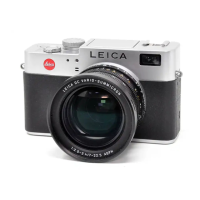To evaluate exposure in the various modes, you may
position your camera, frame your subject and press the
shutter halfway to hold the setting when the desired
exposure is achieved. Pressing the shutter all the way
will take the picture. Once you let go of the shutter
button, the process begins again.
Note: Due to the need to deliver a real-time preview
for focus from the sensor data, you may find that the
displayed image does not reflect the effect of the ex-
posure adjustments. If possible you may wish to quickly
review your image immediately after capture to verify
that the exposure is what you expected.
Backlighting in Manual Mode
In some ways challenging lighting situations are best
approached using manual exposure. While it may take
a few moments to think out the approach you wish
to take, the resulting image will be tailored to your
specific creative goals.
Using Manual Exposure mode you may find the best
exposure for the scene by simply taking several images
and adjusting the aperture as needed. When reviewing
your images, you may use the image histogram display
as a guide to the tonal distribution to insure the best
output quality.
Manual Exposure with Fill Flash
Due to the extremely wide tonal range of backlit
scenes, it is often helpful to use the built-in direct
or bounce flash to provide more detail and control of
color balance in the shadow areas of your image.
It takes practice to find the right mix of settings as
there are almost unlimited variables, but the following
steps will be useful as you begin testing this approach.
Using the Aperture and Shutter Speed controls and
the image preview histogram display, find an exposure
point where the histogram is balanced between dark
and light tones.
Once you arrive at a balanced exposure, turn on the
built-in flash and take a picture. If the flash exposure
is too bright, you may try the bounce flash position to
provide indirect lighting. The flash exposure may be
controlled by pressing the EV button on the back of
the camera three times, and using the control dial to
lighten or darken the flash exposure. You may have to
also adjust your aperture and/or shutter speed to fine
tune the overall exposure balance.
This image was exposed manually with strong
backlighting.
Evaluate the image and the effect of the flash fill. You
will notice that the foreground will have considerably
more detail, and the color balance will be neutral. If
you want a more dramatic effect you may choose to
manually set the color balance to different settings.
When photographing in this mode, you are in full
control of the camera, and the only guide is the mood
you wish to achieve. Spending time with this type of
photography is infinitely more rewarding than sitting in
front of the computer trying to re-create what could be
done much more naturally in camera.
This image was exposed manually with strong
backlighting. The camera’s built-in flash was used
as a fill light to balance the exposure.

